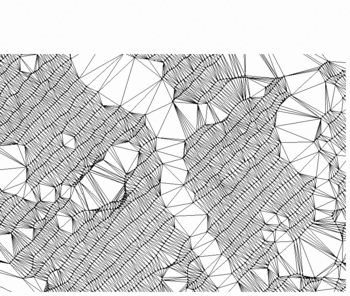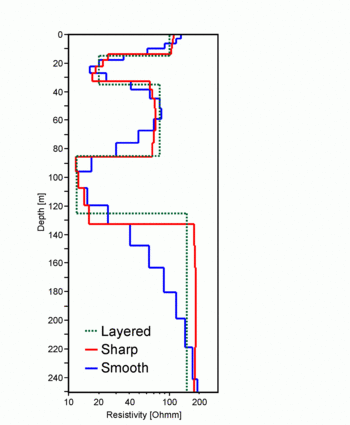

Inversion of the airborne EM-data in Aarhus Workbech is preformed with the AarhusInvcode. Locally we use a 1D model description/EM-response. The models are laterally and spatial constrained forming a pseudo 3D model spaces. The inversion code has be customized to handle vary big airborne EM surveys and support multi CPU cores with a very high parallel efficiency.
Besides the resistivity models provides the inversion code also a depth of investigation value (DOI) and a data residual for each resistivity model.
The laterally constraints can either work in depths or elevation.
The smoothness or sharpness in the model results is control by the strength of the constraints and the regularization scheme. Aarhus Workbench offers three main type of model discretization/ regularization scheme:
Aarhus Workbench also supports prion constraints on any model parameter. The prion constraints can be initialized from grids and direct from the GIS map or be specified at borehole locations with decreasing strength moving away from the borehole locations.

To obtain high quality inversion results is it important to modelling the airborne EM-system in great details. We therefore include the following parameters in the modelling: